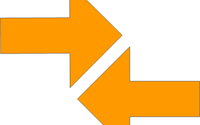 The IoT gadgets are coming.
The IoT gadgets are coming.
Whether many consumers
will want or buy into some of these technological marvels is yet to be seen.
At the IFA consumer electronics show in Berlin last week, sort of an IoT gadgetry prelude to CES International in
Las Vegas in January, at least there were indications of some of the early IoT thinking by major makers of the technology.
And based on some of the major announcements, the thinking is that
homes need to be smarter, appliances should be interconnected and wearables should get smaller and more powerful.
Samsung introduced a device aimed at letting you know how good of a night
sleep you had, in case you can’t tell by yourself when you wake up.
The added twist here is that the Sleepsense has the ability to adjust other devices in the home, like lighting
and heat, to be timed with your sleep. The flat, round pod goes under your bedding rather than being worn and measures things like heart rate and breathing.
advertisement
advertisement
The bigger news from Samsung
Electronics was the statement from its chief executive that within five years, all devices made by Samsung will be IoT enabled.
Most of the smart home technology will be managed from
smartphones, still the hub of much of the IoT for the foreseeable future. Here are but a few of the latest announcements from the event:
- Sony touted new smartphones that use wearable
tech for adding augmented reality to PlayStation games.
- LG unveiled its first smart oven and air conditioner that works on an established IoT platform, the one adopted by more than 150
global home appliance makers. That allows all products to be connected to each other, no matter who makes them.
- Siemens showed a refrigerator that uses a webcam that can be tapped into by a
smartphone so that a person can see what may have to be added to a shopping list without opening the refrigerator.
Overall, smartwatches are getting smarter and being made to look more
fashionable, kind of like traditional watches.
The key here is that technological capabilities for interconnectedness are being increased dramatically and are rolling out into the
marketplace.
Some of the connected device capabilities look like they’re being done because they can.
There will be two aspects of marketing involved in all of this.
First, there will be the marketing of all these products to consumers in an attempt to incent them to purchase.
Secondly and more significantly, once consumers decide which types and
categories of IoT devices they deem worthy of adoption, the real marketing, on and through the connected devices, begins.
Sensors and connected devices are coming in a massive wave. And
that’s where the messaging will ride.